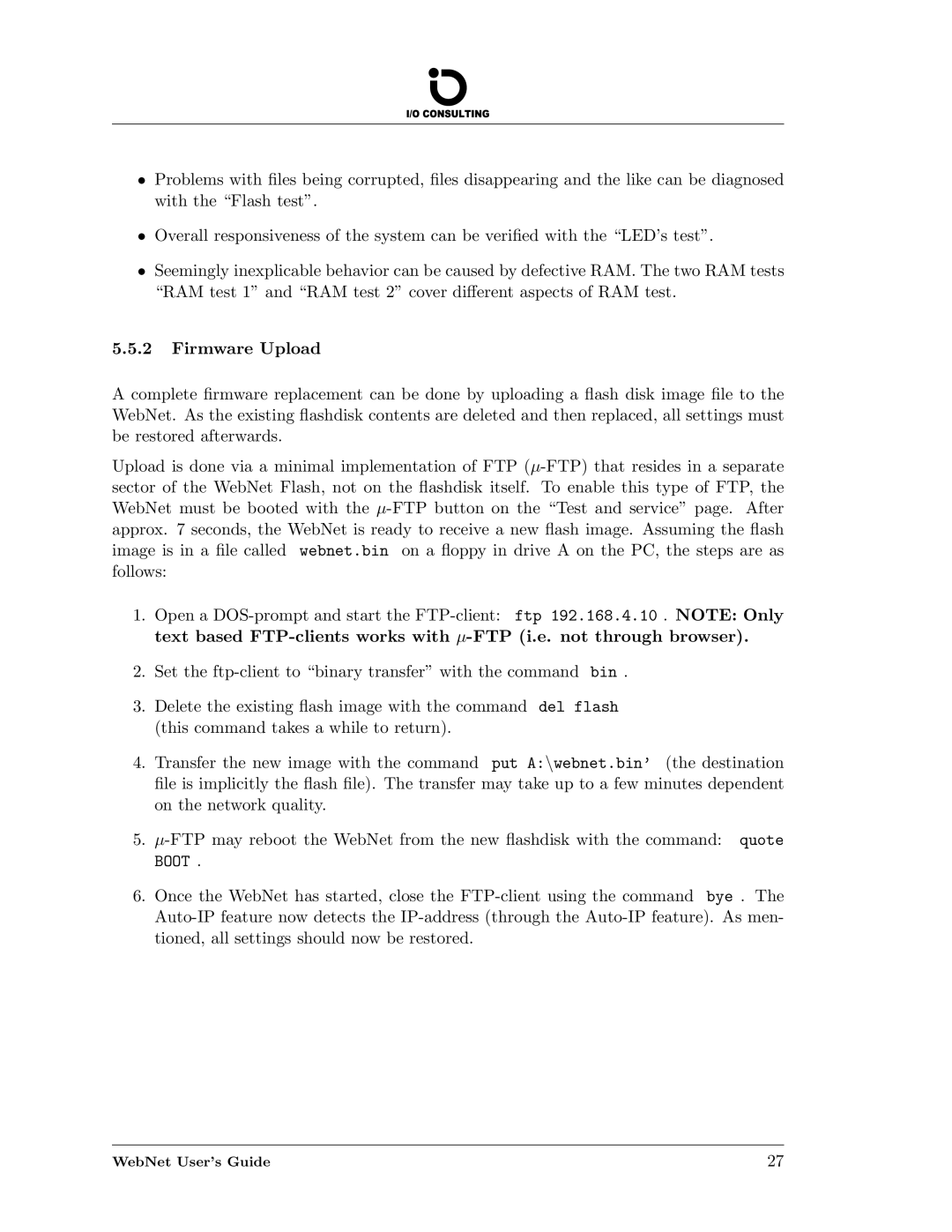
†Problems with files being corrupted, files disappearing and the like can be diagnosed with the “Flash test”.
†Overall responsiveness of the system can be verified with the “LED’s test”.
†Seemingly inexplicable behavior can be caused by defective RAM. The two RAM tests “RAM test 1” and “RAM test 2” cover different aspects of RAM test.
5.5.2Firmware Upload
A complete firmware replacement can be done by uploading a flash disk image file to the WebNet. As the existing flashdisk contents are deleted and then replaced, all settings must be restored afterwards.
Upload is done via a minimal implementation of FTP
1.Open a
2.Set the
3.Delete the existing flash image with the command del flash (this command takes a while to return).
4.Transfer the new image with the command put A:nwebnet.bin’ (the destination file is implicitly the flash file). The transfer may take up to a few minutes dependent on the network quality.
5.
6.Once the WebNet has started, close the
WebNet User’s Guide | 27 |
